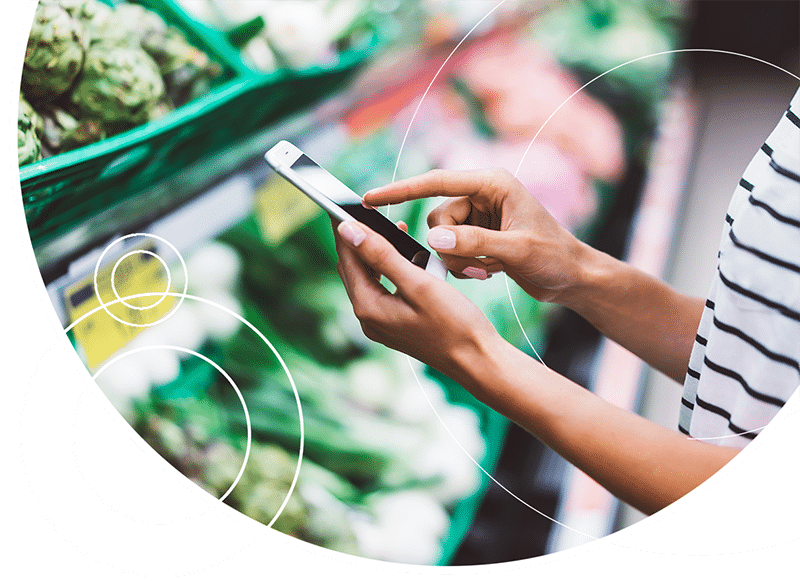If any of you have teenagers, you would think that the entire world communicates only through emojis and Instagram. I swear, my kids have forgotten how to look up. Then again, perhaps we adults are also guilty. I know that, for myself, a part of my average, everyday routine revolves around LinkedIn, Twitter, Facebook, Instagram, and my nightly 30 minutes of unnecessary Amazon shopping.
But, with all the constant staring at mobile devices, what you may think of as the “new norm” is actually far from it—especially when it comes to shopping. Although it seems as though every retailer these days has an app and an eCommerce site (as they should), the fact remains that 71% of consumers still prefer to shop in-store.
Why is that? Simply put, human beings are still very much social creatures. We, as a species, want and need personal interaction. It may also explain why depression is so prevalent in the modern age of social media, it’s simply due to a lack of real and in-person connections. So, what does this have to do with modern customer engagement you ask?
Shopping always has and always will be a social thing. Throughout history until now, the concept of shopping included touching and feeling products, witnessing comparisons firsthand, comparing prices, and even people watching. The question then is, what has changed, if anything, in the thousands of years of commerce? The answer is: nothing—and everything—simultaneously.
In today’s modern digital landscape, people still really want to talk to people, shop like they always have, and be out in the world experiencing all they can. The difference now is they expect every interaction to be hyper-personalized and expect to be able to share that experience with the world. It’s this “new” aspect of retail that must be addressed by retailers if they want to be successful, let alone remain relevant.
To tackle the first challenge—the idea that everything must be highly personalized—we simply need to talk about data. The same data that is captured and used through everything from social media and retail apps to eCommerce sites, and so on. This is what leads to people being treated like true individuals. For instance, if a retailer, in theory, knows everything about a customer, then why can’t they also leverage that knowledge in-store for a more personalized experience? The answer: they should and they can.
Also known as single-user-profile data, a retailer can now know far more about an individual than ever before. This means that if in-store staff were to have access to this data in an intelligent and actionable manner, the social aspects of shopping will have just reached a new level. Imagine, a shopper walks into their favorite store and is greeted not only by name, but with personal insight: like a friend saying hello to another friend. This is the game changer. From shopping habits and previous purchases to likes and dislikes, the in-store staff member is no longer just some clerk working the retail floor. They are now perceived as a personal concierge for that customer’s shopping needs.
The best way to think about it is this: we all have our “people.” Throughout our lives we create a list of people, the “go-to” people who help us and our friends and family do everything from buying cars or homes, doing our taxes, home renovations, and so much more. We all have that Rolodex, and this is the same thing. It’s another person in our lives who knows what we like and don’t like, and who is there to lean on when looking for a specific item. And, in the case of the single-user-profile, the only difference between this relationship and any other is that it’s based on a data file.
Then, of course, once that single-user-profile data has solved the first challenge of being social, we then need to tackle the second challenge: the “Instagrammable” moment. Yes, social media is here to stay and is also another part of the new way people socialize. Therefore, retailers need to embrace this as part of their every day marketing and sales practices in two very distinct ways: First, encourage social media sharing. From prices and offers to rewards and more, this aspect of social media can help you build an even bigger customer base, one that is more engaged and far more loyal than the average unknown customer.
And, second, leverage social media to be even more social. Feature your customers on your own social media (if they agree to it, of course), to make them feel special and wanted. And, as you do so, capture that information in their respective single-user-profile data to be leveraged later.
All in all, experience is everything. If your customer feels wanted and appreciated, while simultaneously being shown that you actually “know” them, that experience will far outweigh promotions, ads, sales, and general pricing. People are social, and with that comes trust, and with that comes loyalty. If they are treated like friends, they will go to the ends of the earth to share a word-of-mouth testimonial stating that you actually care. So what do you say? Want to be social?

Andrew Armstrong
Chief Customer Officer
Andrew Armstrong is the Chief Customer Officer at omNovos – working globally with customers to design world-class customer engagement programs. He’s a prolific writer and speaker on topics including customer loyalty, personalization, and retail marketing technologies. Connect with him on LinkedIn or Twitter - his open approach to all topics usually leads to a fun discussion and a few laughs.

